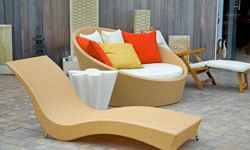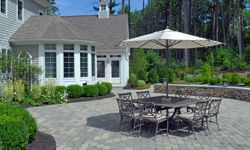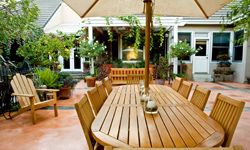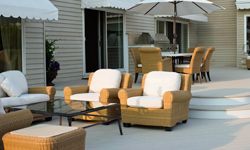There's something really nice about the idea of turning part of your landscape into an alfresco family room during two or three seasons of the year. It's certainly a less expensive option than adding another room to your home. Who needs walls, anyway? Open air living has "green" appeal. It gets you back into nature -- and nature you can control with a flick of the garden hose or a spritz from a can of bug spray.
Making the transition to outdoor living requires a judicious reallocation of resources, though. If you're outfitting an outdoor living area this season, finding comfy, long-lasting furniture may mean the difference between hanging out on the patio for a while to enjoy the fresh air and heading indoors after a few cramped, uncomfortable minutes parked on a cheap patio chair.
Advertisement
Patio décor has to be more than merely attractive to withstand the elements and provide good value for your outdoor decorating dollar. Let's explore 10 things you should keep in mind when shopping for outdoor furnishings.




